Psi’s Big Guns: Sleep Paralysis and Astral Time Travel
A year ago I wrote at length about out-of-body experiences (OOBEs) in the context of alchemy and the hermetic tradition. I confessed that I was a fence-sitter on the question of what they are—lucid dreams that just feel more real than most (i.e., corresponding to real physical environments) or actually what they feel like, some kind of dislocation of consciousness from the physical body in a “subtle” state. The latter is the doctrine and assumption of the Theosophical tradition and its modern heirs, including Robert Monroe and numerous other writers: Consciousness really leaves the body, they say, in some kind of etheric or astral envelope composed of a “fine” substance in between matter and energy. It’s a belief with ancient roots in Egyptian and Greek mysticism and European folklore, in the form of the detachable feminine spirit double.
 Subsequent experiences have deepened my perplexity and raised further doubts for me about whether they really represent a detachment from the physical body. I have been led to think more about their connection to my favorite topic, precognition, as well as to psychokinesis (PK).
Subsequent experiences have deepened my perplexity and raised further doubts for me about whether they really represent a detachment from the physical body. I have been led to think more about their connection to my favorite topic, precognition, as well as to psychokinesis (PK).
I have been particularly scratching my head over an OOBE I had a year and a half ago and that received “confirmation” of its veridicality almost exactly a year later, last August. It is thus far my only deliberately induced OOBE … and maddeningly, it opens itself up to multiple interpretations. Superficially, it does seem to confirm the “precognitive hypothesis” that I have been advancing in these posts. But it would be easy to read it in standard Jungian terms too, and in fact none of the readings can fully encompass the strangeness. It also has a possible mind-over-matter dimension.
It feels like a good opportunity to solicit the opinions and insight of my readers—crowdsourcing a “read” on my experience. So … readers, have at it!
The Backstory
I had been studying the literature on astral projection for the better part of a year by the time I achieved my first success at intentionally inducing one in late August, 2014. My favorite book on the subject is Sylvan Muldoon and Hereward Carrington’s 1929 classic The Projection of the Astral Body, an excellent collaboration between a frequent experiencer (Muldoon) and a psychical researcher (Carrington) who was able to put the young man’s numerous astral adventures in a theoretical and scientific context. (There are other fruitful collaborations between practitioners and theorists in the paranormal studies, the latest being Whitley Strieber’s collaboration with Jeffrey Kripal, The Super Normal, which I hope to discuss in a future post.) Other fascinating books have been written on the subject, particularly from the early and mid 20th Century. A few modern guides are also useful: I find Robert Bruce’s updated Theosophical metaphysics a bit iffy, but his guidebooks like Astral Dynamics have a lot of original and effective tips and tricks that show he knows what he is talking about from a practical point of view.
Precognition’s lack of familiar context would be the basis for the “uncanny” or “unhomely” that has always been associated with the paranormal: The future is the one source of information that really has no “home” for us.
My success in August 2014 was not my first OOBE—I had had one spontaneously 16 years earlier, before I was really even aware of the concept, although I did record it in detail in my dream journal (more on it below). I also had at least two OOBEs in my late teens or early twenties that were unfortunately unrecorded and I think were less detailed—just (amazingly and bafflingly) flying around the ceiling in my bedroom. Bruce would say, however, that we’re having these experiences nightly but just don’t remember them—and I think he’s probably correct.
Although I’ve consciously logged only a minute or two total of astral flight time in my life, I am no stranger to sleep paralysis, the universal precursor to OOBEs. I experienced sleep paralysis episodes frequently (and terrifyingly) as a young adult and periodically over the years since. My year of attempts at bringing on an OOBE produced several such episodes and also, on a couple occasions, pleasurable energetic or even “Kundalini”-type sensations traversing my body. Those alone confirmed that the guidebooks were not leading me astray. Typically these experiences led into standard lucid dreams, often in astonishing environments but without any veridical content that I could detect afterwards.
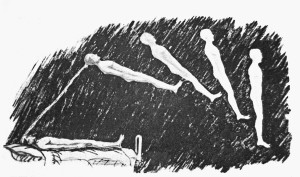 There is clearly something special about the OOBE state, and about sleep paralysis as its doorway; all the sources concur on the latter. The universally fearful aspects of sleep paralysis, or what used to be called “astral catalepsy,” only abate with experience and especially with reading experience, the ability to say “OK this is just sleep paralysis and nothing is really going to harm me.” The fear becomes a doorway to be pushed through, either into a lucid dream or, evidently when the stars align just right, something more.
There is clearly something special about the OOBE state, and about sleep paralysis as its doorway; all the sources concur on the latter. The universally fearful aspects of sleep paralysis, or what used to be called “astral catalepsy,” only abate with experience and especially with reading experience, the ability to say “OK this is just sleep paralysis and nothing is really going to harm me.” The fear becomes a doorway to be pushed through, either into a lucid dream or, evidently when the stars align just right, something more.
A Heavy Cat
My OOBE in August 2014 was preceded by a sleep paralysis episode, but it did not follow the typical pattern. Usually in such episodes it seems very much like my eyes are open (even though they usually really aren’t) and I am in my bed or the couch, or wherever I have fallen asleep, and cannot move. In this case, although I was in fact in bed, “I awoke” to find myself (or at least, my point of view) fixed down near the floor in a small closet next to the bedroom where my wife and I keep our vitamins, medicine, and miscellaneous toiletries, and where my wife stows several pairs of shoes. My gaze was facing a bunch of those shoes, of all things, and I felt I was being weighed down by a heavy cat that was on my back and that I could not see. I could not move or do anything, but felt initially immense fear that only gradually abated.
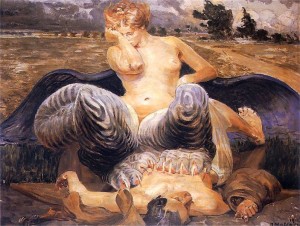 Feeling like you’re being weighed down by an unseen presence is very typical in sleep paralysis experiences—in some cultures, there is the belief that an “old hag” is sitting on your chest—but I had never actually interpreted my immobility as being “sat on” before, and never by a cat. It also felt like this weird and undignified situation was summoning some scary ESP power, some dark energy; I wrote in my journal afterward that it felt like the “other side” or like “black magic to complement my white, Zen practice.” I will come back to this weird and scary little prelude to the main show later. Actually, while I thought it was a prelude, it turned out to have much more significance in hindsight.
Feeling like you’re being weighed down by an unseen presence is very typical in sleep paralysis experiences—in some cultures, there is the belief that an “old hag” is sitting on your chest—but I had never actually interpreted my immobility as being “sat on” before, and never by a cat. It also felt like this weird and undignified situation was summoning some scary ESP power, some dark energy; I wrote in my journal afterward that it felt like the “other side” or like “black magic to complement my white, Zen practice.” I will come back to this weird and scary little prelude to the main show later. Actually, while I thought it was a prelude, it turned out to have much more significance in hindsight.
The sleep paralysis phase abated, replaced by what I considered to be the OOBE proper: I suddenly was hovering, very lucidly and clearly, without fear, up near the ceiling of my study, about ten or twelve feet down the hall from the medicine closet. The scene was totally realistic: It was dark, only illuminated by the streetlights outside, and I was gazing down over my desk through the window, past some tree branches, at the cars parked on the quiet street below. I was immediately aware that this was what I had been attempting for months—an actual full-on OOBE—and I felt jubilant. Following the instructions of Robert Bruce, I “kept my flight short” to ensure remembering it after I awoke, and thus turned and started to “fly” back toward the bedroom. As I turned away from the window, the visual experience faded and froze, almost like a glitchy videotape coming to an end (a strange peculiarity I have also noted when waking from lucid dreams) and then my wife shook me awake because, she said, I was “snorting” loudly.
That detail of “snorting” is significant, because my last, spontaneous OOBE, in 1998, also ended with my then-wife awakening me because I was, as she said (and as I recorded in my journal), “snorting like a pig.”
The 1998 OOBE too—although I did not at the time really know about OOBEs and just thought it was a strange nightmare—was set in the study of the house I then lived in in Atlanta. In that experience, I or my “astral body” was “sitting” in front of the study window, at night, able to see the trees outside, and I was holding in my left and right hand respectively a red and a white grease pencil. Somehow because I knew it would summon a dark, sorcerous power, I touched (I think) the tip of the white pencil to the tip of the red one, which seemingly caused an energetic short circuit that opened up a doorway to some kind of malevolent, possessing presence. The vibrations of it terrified me and that is what woke me up. The detail of the grease pencils (albeit not their terrible power to summon dark forces) was correct: I did have such grease pencils on or near my desk. In hindsight, this was clearly also an OOBE, as every other detail was totally realistic, which never occurs with standard dreams or even lucid dreams.
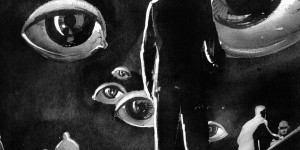 On the more recent astral trip into my study in 2014, just one detail seemed odd: Outside the window, somehow hovering in empty space between the window and the cars below, were two green points of light, right together, almost like eyes but stacked vertically or at an angle. I immediately had the sense of being watched by some kind of surveillance camera, but could see no box or device the lights were attached to. I thought there was a slightly ominous quality to these lights, almost like something disembodied and alien peering in at me. On waking, I recorded this feeling, along with a description of the whole experience, in my journal, and noted that the green lights cast a shadow of doubt over the veridicality of the experience, because they did not correspond to anything that was there in reality. The next night I looked out the window at the cars on the street to see if there was some dashboard light that I could have misinterpreted, or some electrical box affixed to a light pole or the tree, but saw nothing of the sort.
On the more recent astral trip into my study in 2014, just one detail seemed odd: Outside the window, somehow hovering in empty space between the window and the cars below, were two green points of light, right together, almost like eyes but stacked vertically or at an angle. I immediately had the sense of being watched by some kind of surveillance camera, but could see no box or device the lights were attached to. I thought there was a slightly ominous quality to these lights, almost like something disembodied and alien peering in at me. On waking, I recorded this feeling, along with a description of the whole experience, in my journal, and noted that the green lights cast a shadow of doubt over the veridicality of the experience, because they did not correspond to anything that was there in reality. The next night I looked out the window at the cars on the street to see if there was some dashboard light that I could have misinterpreted, or some electrical box affixed to a light pole or the tree, but saw nothing of the sort.
So, while excited to have finally achieved success at deliberate “astral projection,” and intrigued by the similarities to my experience in 1998, it didn’t answer any questions in my mind. It certainly “felt” real, felt like my consciousness had separated from my body and I was hovering in my study, but there was no way to prove this to myself, and the detail of those green lights lent a slightly dreamlike quality to the otherwise realistic scene. As for the prelude, the sleep paralysis episode-slash-lucid dream “set” in the medicine closet, I interpreted that as merely symbolic of the fact that, just before bed, I had consumed a cocktail of over-the-counter nootropic supplements that I frequently took to aid in bringing on lucid dreams. I thought no more of that part, because it didn’t seem significant at the time.
The true significance of this episode did not become apparent until a year—almost to the day—after the fact.
Astral Eyes
One night in late August, 2015, I found myself standing on a chair in my study, changing the light bulb in the late evening. I happened to look down toward the window, over my desk, and saw … a double green light. It was a reflection of my laptop power cord, which has a diode that glows green when plugged into the computer and charging. The reflection would have been invisible from any lower angle; it was doubled because of the double panes of glass. My point of view, high up on the chair, was identical to where my “astral eyes” had been positioned a year before in my OOBE.
 This was stunning: I immediately recognized this as “verification” of my OOBE. I had to check my journal to find the date, and was stunned, again, at the fact that it was just three days shy of a year since that experience.
This was stunning: I immediately recognized this as “verification” of my OOBE. I had to check my journal to find the date, and was stunned, again, at the fact that it was just three days shy of a year since that experience.
But immediately I also knew that there was a second possible interpretation: Was this really a confirmation of an OOBE or was the OOBE in fact “just” a precognitive experience of standing on a chair in my study and looking down at the green diodes reflected in my study window? If I had been a worthy paranormal researcher, of course, I might have photographed the scene initially after the OOBE, and that would have been able to confirm whether my laptop was charging on my desk that night a year earlier, potentially clearing up the ambiguity. Of course, no such luck—it never would have occurred to me.
Out of parsimony, but also admittedly partly because of vanity (I like my precognition hypothesis), I opted to side with what I consider to be the simpler of the two interpretations: The OOBE was indeed purely a vivid precognitive experience, not an actual journey out of my body. It raised the question for me whether many reportedly veridical OOBEs and near-death experiences are not in fact vivid (but misinterpreted) precognitive dreams of a later “scene of confirmation” in which the person happens to duplicate in real life the physical situation or scenario in the dream—perhaps precisely in the process of confirming their experience (in other words, the time-loop feedback effect I have discussed in several articles). Even with the 1998 case in Atlanta, I remember sitting down at my desk the next day and idly touching two grease pencils together, mimicking what I’d done in the dream, just out of curiosity … so that “OOBE” also could be interpreted in these terms.
Astral travel, in other words, seems to me more likely a form of time travel, not space travel.
But there are more layers to the weirdness, which add to its ambiguity.
A Very Bad Weekend
The weekend in 2015 when I happened to be changing the light bulb in my study was an emotionally very eventful one for my wife and me. A couple days previous, I had groggily awoken in the night to pop a couple of Advil, which we keep in the aforementioned closet down the hall from the study. In the process, I dropped one, and then couldn’t locate it amid my wife’s shoes.
I became increasingly desperate to find the pill, because one of my two cats will eat anything she finds, including medicines. She has done so before, resulting in expensive calls to the poison hotline. Unfortunately, she was indeed hanging out right behind the open door to the closet, and since I couldn’t locate the Advil in the closet, my immediate thought was that it had gone under the door and my cat had promptly swallowed it. A quick trip to my computer in the study, googling “advil” and “cats” confirmed that the former is poisonous to the latter. Increasingly frantic, I searched every inch of carpet in the hall outside the closet, but finally gave up.
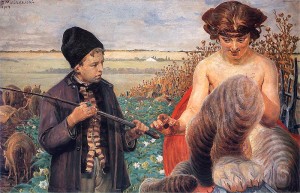 Long story short, I threw on some clothes and drove her to the 24-hour veterinary hospital and they admitted her. Unable to get her to vomit anything up, they put her on IV fluids to flush her system and try and prevent kidney or liver failure if she had indeed swallowed the pain reliever. The next two days, her condition was stable, but on her second night in the hospital, she had multiple life-threatening seizures. My wife and I were miserable—especially I was miserable, because I thought my carelessness had put my beloved cat’s life in jeopardy and she was now having to stay in a bedlam-like vet hospital with a lot of other screaming cats and dogs. Not to mention the fact that this fiasco was hemorrhaging our savings.
Long story short, I threw on some clothes and drove her to the 24-hour veterinary hospital and they admitted her. Unable to get her to vomit anything up, they put her on IV fluids to flush her system and try and prevent kidney or liver failure if she had indeed swallowed the pain reliever. The next two days, her condition was stable, but on her second night in the hospital, she had multiple life-threatening seizures. My wife and I were miserable—especially I was miserable, because I thought my carelessness had put my beloved cat’s life in jeopardy and she was now having to stay in a bedlam-like vet hospital with a lot of other screaming cats and dogs. Not to mention the fact that this fiasco was hemorrhaging our savings.
Here’s the thing: On the Monday morning I spoke to the vet and learned of our cat’s seizures and their decision that she couldn’t yet be discharged, I had a funny feeling about that Advil. It prompted me to return to the medicine closet and look one more time for the missing pill.
You guessed it. Unbelievably, there it was: not on the floor or in any one of my wife’s shoes, as it should have been, but sitting up on a narrow black binder or case standing against the wall of the closet. Its position made it look like a button on the case itself, and thus it would have been easy to overlook in my nocturnal panic two nights earlier. Somehow, it had bounced, probably off my shirt, and landed in a nearly impossible spot.
My first thought, I’m ashamed to say, was “Just don’t tell anyone.” Really, I felt bad enough already, and now it was clear that my cat had been hospitalized for nothing, and I felt like a fool. That thought passed in seconds, and I called the vet and told her frantically that I had found the Advil. The vet was silent for a second—she possibly thought I was crazy—and calmly reiterated that my cat would need to remain in the hospital and be monitored at least for another day, as she had had seizures. If she hadn’t actually swallowed something, then it meant she would need to go on anti-seizure drugs as she was clearly epileptic.
We brought our cat home the next day, I defied the various doctors and tapered her off the anti-seizure pills, and she’s been fine ever since. I don’t know what happened to her at the vet hospital, and I hope my carelessness with over-the-counter drugs never again results in such an awful and (for me) expensive misadventure.
It wasn’t until a few months later that the Advil episode and its possible connection to my sleep paralysis episode a year before dawned on me. Like I said, that part had been overshadowed by my successful OOBE, and I had written the “closet sleep paralysis” off as a prelude, “symbolic” of my having taken some supplements beforehand. But in hindsight, it proved to be the more significant of the experiences that night. Thank goodness for dated journals. I had clearly—there is no way of avoiding this interpretation—precognized the Advil affair: In the sleep-paralysis episode, my head was down by the floor, looking at my wife’s shoes, which is exactly what I did in fact do a year later, on the night I dropped the pain reliever. Moreover I had felt like “a heavy cat” was weighing me down; the cat in question, as it happens, is a bit plump (unlike our other cat). Feeling “weighed down” by her would certainly also correspond both to my anxiety over her possibly having eaten the pill and to my guilt that my negligence resulted in her miserable and seizure-inducing hospital stay.
That this part of the experience was clearly, unmistakeably precognitive supported the precognitive interpretation of the OOBE too. Other dream/visions in the context of sleep paralysis have confirmed for me quite strongly that sleep paralysis is a powerfully precognitive state. The terrifying mood or sense of an evil presence must be dissociated from the actual content of what you are seeing, doing, or trying to do in the dream. (Another more recent sleep paralysis experience also proved precisely veridical, although of a situation about 30 seconds after the dream, not a full year.)
Apports
After working with dream precognition for a few years, the precognitive nature of sleep paralysis and OOBEs surprises me not at all. But additional details lend this episode—or these linked episodes—a further paranormal twist, specifically opening the door to a topic I have avoided so far on this blog because my knowledge of the literature is admittedly much more limited. In my focus on precognition over the past couple years, I have mostly put off dealing with psychokinesis or PK phenomena, including poltergeist phenomena as a subset of those. But there may be a PK dimension to this “OOBE.”
The terror/feeling of “evil” in sleep paralysis phenomena may be the sleeping brain’s erroneous attempt to interpret information arriving from the future.
The shelves in my study contain numerous crystals and other rocks, not because I attach conventional mystical significance to them but simply because I like them and can’t help buying interesting items at rock shops whenever I return home to Colorado. A month before my OOBE, I had purchased a small slab of specularite (AKA specular hematite) in Estes Park, CO, and set it on a bookshelf in my study. Two days after the OOBE, I happened to discover that it had a crack running through it. I asked my wife about this, and she explained she had actually found it one morning on the floor at the base of the bookshelf, where it had evidently fallen in the night. Unfortunately, she couldn’t remember exactly which morning it was, but it had to be either the morning after my OOBE or the subsequent morning.
The only non-paranormal way that slab of specularite could have fallen on the floor is if one of my cats had knocked it off. But my mind obviously went to the stranger possibility that perhaps my “astral body” had dislocated it, perhaps when I whirled around to head back to the bedroom in my hurry to record my successful deliberate OOBE. I would have “flown” right past it on my journey. But of course, not knowing for sure which night it had fallen, I was again unable to come to any firm conclusions. But if my OOBE was “really” a vivid precognitive experience, as I later came to believe and as the more unmistakably precognitive experience with the Advil affirmed, then any involvement of the specularite at the time of the OOBE would be senseless. Right?
But … there is also the Advil itself, almost a year to the day later. Although I’m a PK believer, my skeptical side kicks in big time around certain phenomena such as “apports,” or objects that mysteriously just appear or change their location, as though teleported. Yet I am forced to admit, the mysteriously disappearing-and-reappearing Advil is awfully suggestive as an apport. I would like to think I just didn’t see it when I searched among my wife’s shoes, where I thought it must have landed (according to all laws of physics I know). Instead it landed somehow on a the spine of a narrow nylon binder, exactly in the middle, where it could easily look like a button or rivet.*
Or else, it vanished completely when I dropped it and it reappeared on that binder two days later. As with the specularite, there is no way to know for certain.
“Come play with us, Danny”
Here’s where the final baffling piece of this mystery comes in. I don’t even want to admit this part, because it points exactly to the Jungian stuff I keep doing my best to challenge on this blog. But here goes.
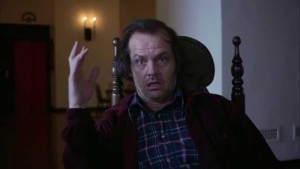 On the weekend in question, while my cat was in the hospital and the day before I found the Advil I had wrongly thought she had swallowed, my wife and I had some good friends over to watch The Shining. My friend is an astrologer and writer, and since both our wives were pregnant, we thought it would be fun to watch this movie about the supernatural horrors of writing and fatherhood.
On the weekend in question, while my cat was in the hospital and the day before I found the Advil I had wrongly thought she had swallowed, my wife and I had some good friends over to watch The Shining. My friend is an astrologer and writer, and since both our wives were pregnant, we thought it would be fun to watch this movie about the supernatural horrors of writing and fatherhood.
It’s one of my favorite films, and I’ve always been struck by Kubrick’s sophistication around the topic of the paranormal and possession. The most interesting scene, I think, is Jack Torrance’s terrible nightmare, from which Wendy has to rouse him. In the dream, he says, he was attacking and trying to kill their boy, Danny, and then her. Just then, Danny, in a kind of fugue or daze, his sweater ripped, wanders into the room where Wendy is consoling Jack. Wendy rushes to him, sees bruises on his neck, and then blames the bewildered Jack for attacking him. Later it turns out that the mysterious woman in room 237 had attacked the boy—presumably, exactly during the time Jack was having his dream.
Whether deliberately or not, this scene reflects the European folkloric belief I discussed in my earlier post: that our feminine spirit double can detach from our body when sleeping and perform actions and even make mischief on our behalf. Implicitly, it is Jack’s spirit double (the “old hag” in room 237) that attacked Danny, unbeknownst to either of them. Yet at the same time, Jack’s dream is also precognitive of what he will attempt to do to his family later in the film.
The detail that I uncannily keyed in on during this viewing was what immediately precedes this scene: Danny is playing on the carpet in the hallway, when from nowhere a tennis ball rolls toward him. It seems to come from room 237, the door of which is ajar, inviting him in. But the alert viewer will note that this is the same tennis ball that Jack hurled down the hall and out of sight days earlier, after working out his aggression by tossing it against the wall in the Overlook hotel lobby. In other words, it’s an apport. I had been thinking of this scene the next morning, and it is partly what prompted me to go look for the Advil again. The pill seemed to duplicate that tennis ball: disappearing and then reappearing, significantly.
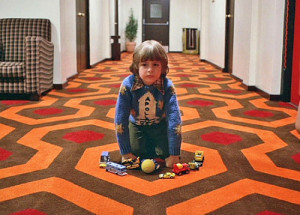 Our decision to watch The Shining that weekend was not spontaneous—we had prearranged this movie date weeks in advance—thus I cannot chalk it up to a “precognitive inspiration” on my part. The connection between the movie and the real-life emotional events of that weekend felt unmistakeably synchronistic in the standard, Jungian way. I’ve discussed synchronicities with my friend on several occasions and he would certainly have felt comfortable with the Jungian reading, whereas I think these experiences reflect misdiagnosed precognition—but admittedly, this one strained such an account. Even if I had indeed simply missed the Advil the first time, we could just say it was the tennis ball in the movie that inspired me to take a second look … but in that case, still, the fact that I had overlooked the pill days earlier again links weirdly to the movie.
Our decision to watch The Shining that weekend was not spontaneous—we had prearranged this movie date weeks in advance—thus I cannot chalk it up to a “precognitive inspiration” on my part. The connection between the movie and the real-life emotional events of that weekend felt unmistakeably synchronistic in the standard, Jungian way. I’ve discussed synchronicities with my friend on several occasions and he would certainly have felt comfortable with the Jungian reading, whereas I think these experiences reflect misdiagnosed precognition—but admittedly, this one strained such an account. Even if I had indeed simply missed the Advil the first time, we could just say it was the tennis ball in the movie that inspired me to take a second look … but in that case, still, the fact that I had overlooked the pill days earlier again links weirdly to the movie.
And then there’s the specularite. I had purchased it on one of my regular visits to the Ore Cart Rock Shop in Estes Park, CO, about a half mile from the Stanley Hotel, which inspired the Overlook Hotel in The Shining.
The Uncanny
I am left with many questions, obviously. Was the Advil an apport or did I just miss it on my first look? What about the specularite—did it just fall from the shelf or was it pushed … by a clumsy cat, or by my clumsy astral foot as I excitedly whirled around to head back to my sleeping body? Why do I always snort like a pig when waking from these experiences?** Does sleep apnea (which I do suffer from) help elicit them?
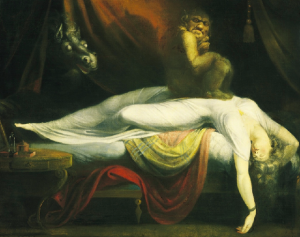 What about the “fat cat” weighing me down in the context of summoning evil power; was this just a sort of symbolic elaboration of my future guilt at putting my cat unnecessarily in the hospital because of a stray pain reliever, or was there a more precise significance: Was it actually my cat’s “spirit double” attacking me in the past (in pre-taliation, you might say, for putting her in the hospital), sort of the way Jack’s feminine spirit double attacks his son?
What about the “fat cat” weighing me down in the context of summoning evil power; was this just a sort of symbolic elaboration of my future guilt at putting my cat unnecessarily in the hospital because of a stray pain reliever, or was there a more precise significance: Was it actually my cat’s “spirit double” attacking me in the past (in pre-taliation, you might say, for putting her in the hospital), sort of the way Jack’s feminine spirit double attacks his son?
What does not seem to be in doubt is the precognitive nature of these experiences. Whatever else is going on, the sleep paralysis episode was like countless other precognitive dreams I have experienced, except it was unusually vivid visually and its target was a full year in the future, not a day or two as is typically the case. It also targeted a more emotionally vivid episode in my life. If the target episode was specifically my finding of the Advil (versus my frantic search for it two nights earlier), then there was a distinct emotional trope or turning, a gradient from frustration to relief (but overlaid with other complex emotions), which is nearly always the case with precognitive dreams: They seem to be about not just strong emotions, but strong emotional turnings (usually, frustration or guilt to relief or excitement, or vice versa).
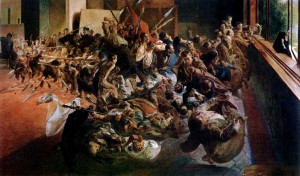 This experience left me with the suspicion that sleep paralysis and OOBEs are the “big guns” of precognitive dream phenomena. If most precognitive dreams about the sink backing up, the smoke alarm going off, or some piece of news on Twitter the next morning are like little insignificant Derringers, a sleep paralysis episode or a full-on OOBE is like a Howitzer, with much longer range and relating to events with bigger emotional impact. That the most gifted psychics (Pat Price, Joe McMoneagle, etc.) have traced their abilities to facility with OOBEs is no accident.
This experience left me with the suspicion that sleep paralysis and OOBEs are the “big guns” of precognitive dream phenomena. If most precognitive dreams about the sink backing up, the smoke alarm going off, or some piece of news on Twitter the next morning are like little insignificant Derringers, a sleep paralysis episode or a full-on OOBE is like a Howitzer, with much longer range and relating to events with bigger emotional impact. That the most gifted psychics (Pat Price, Joe McMoneagle, etc.) have traced their abilities to facility with OOBEs is no accident.
I think there is something important about the terror/feeling of “evil” in sleep paralysis phenomena: I suspect it may be the sleeping brain’s erroneous attempt to interpret information arriving from the future. Such information would lack the context and reassuring signal of past-ness and familiarity that our memories carry with them. Their lack of familiar context would be the basis for the “uncanny” or “unhomely” that has always been associated with the paranormal: The future is the one source of information that really has no “home” for us—it lacks any place in our life experience because it hasn’t happened yet. The semi-awake or sleeping brain may naturally interpret this real unfamiliarity as an evil or sinister presence. (The association of sleep-paralysis-type experiences and undeniable precognition in Whitley Strieber’s massively documented accounts of his experiences also leads me to this conclusion—more on this in a later post.)
Going forward, I am going to operate on the assumption that any feeling of fright/terror in a dream or similar experience may be a “tracer” or signal of incoming precognitive information. We’ll see where that leads.
NOTES:
* Oh yeah, one more odd, probably not significant detail: That black binder that the Advil magically landed on, at the side of the closet behind my wife’s shoes? It’s a binder that contains my wife’s extensive, near-complete collection of David Bowie CDs (including many rarities, imports, etc.). The entire past year, for both of us, was weirdly Bowie-themed, including some odd precognitive experiences around his death. (For instance he appeared to me in a dream a week before he died, staring significantly at me, like he was trying to tell me something, but he wouldn’t open his mouth.) Was Bowie’s spirit double somehow involved in relocating my Advil?
** After my 1998 OOBE, when I awoke in terror and “snorting like a pig,” my initial thought was that this episode reflected some attempt at spirit possession or witchcraft, possibly instigated by a healer/shaman I had met in Papua New Guinea several years before. The “pig” connection, and the possible symbolism of “grease” (the grease pencils) and the anthropologically significant idea of mixing red and white, blood and milk, somehow all pointed to this admittedly farfetched possibility of Melanesian sorcery. Pigs are a big, big deal in Papua New Guinea, and for mundane but personal reasons I’d rather not elaborate, I suspect I was not a particularly popular character in the village I’d stayed in for a few months.
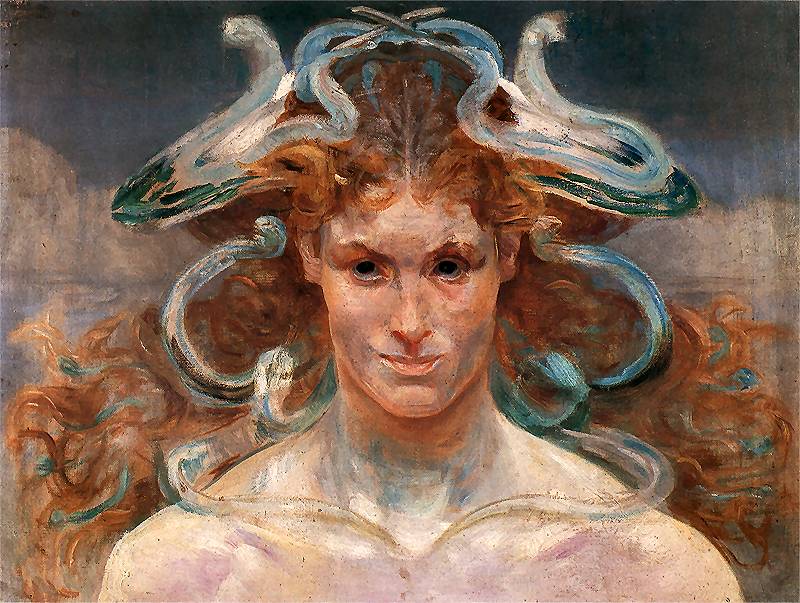
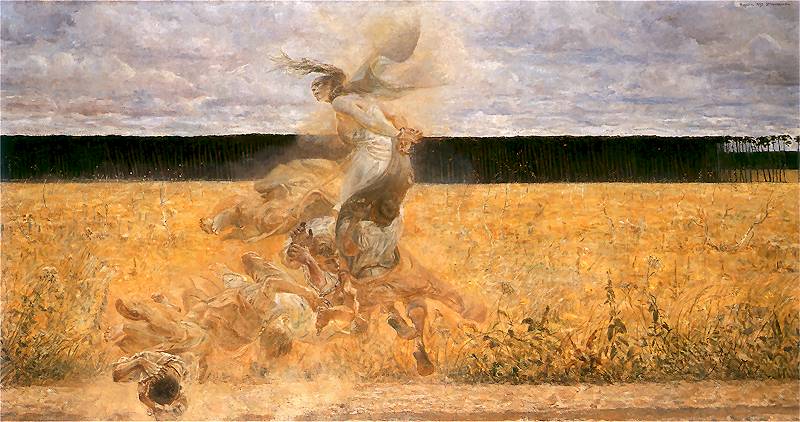




Thanks for including your recommended readings on the subject of OOBE’s Eric.
Having had quite a number of lucid dreams, some of which might have been OOBEs, this topic fascinates me. While I remain agnostic as to what is going on, I do wonder about the possibility that we’re somehow rending a veil of time and entering varying degrees of timeless perspectives. That would easily include having precognitive experiences, and in general experiencing any variety of smeary states of time.
Perhaps too, one’s state of identity, or lack thereof, have an influence on moving from different perspectives of time or timelessness? I say this because it occurs to me that in a more ordinary dream state, I never question the waking world at all. My identity is less in tact, although upon waking I will easily apply my waking identity to the dream experience. In lucid dreams, and maybe this is one of the distinctive qualities, my identity between dreaming and waking states is very much intact. Just some thoughts here.
I recently read a great book by a lifetime experiencer of OOBE’s and wonder if you have crossed paths with this guy. His name is Don deGracia and has a blog in which he offers all of his writings free as pdf downloads. His book on OOBE’s can be read or downloaded here: http://www.dondeg.com/metaphysics/do_obe.pdf The book is a great collection of OOBEs written by Don who has had a lot of experience with them. He also has done experiments to try to verify whether or not he could leave objects during an OOBE and find them in waking states.